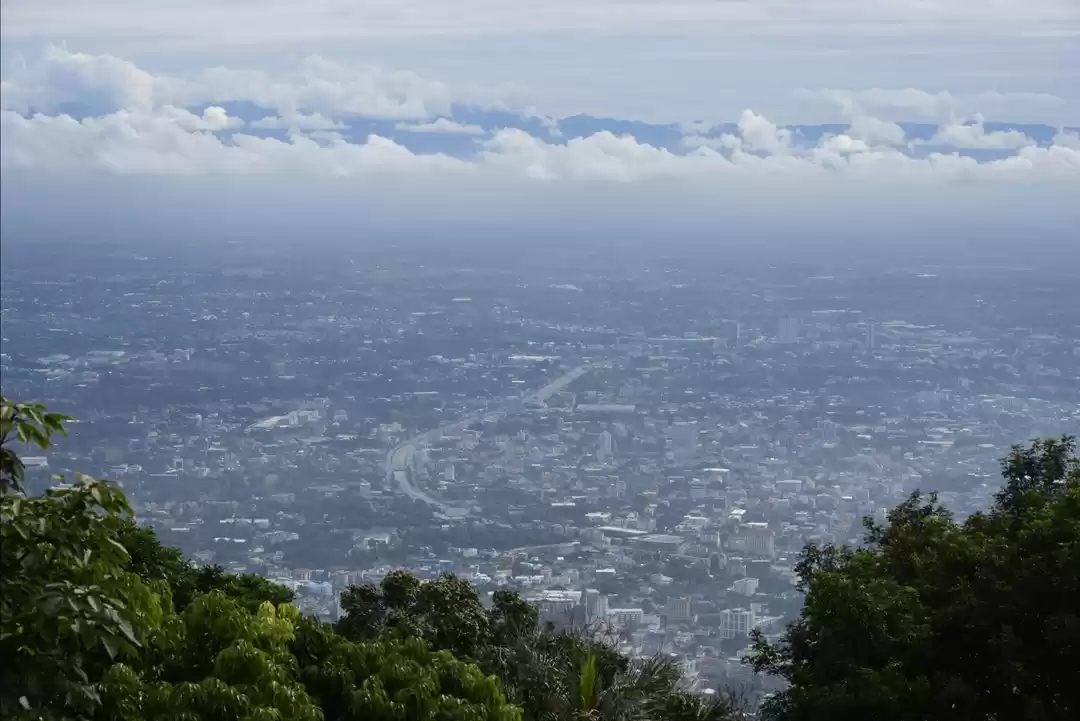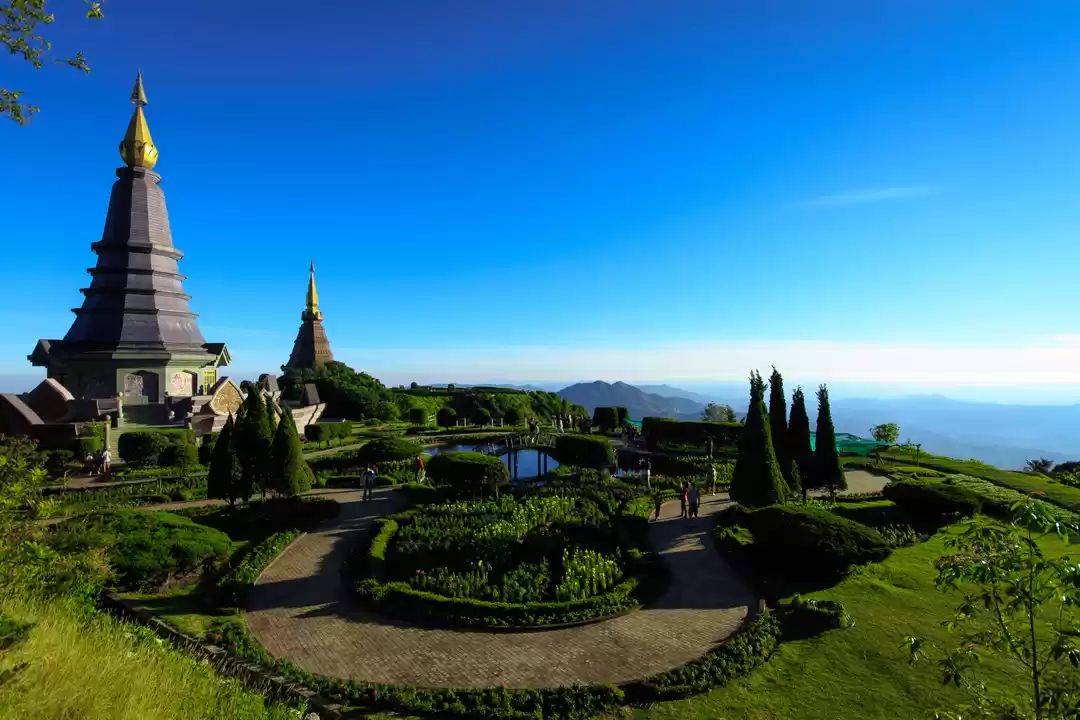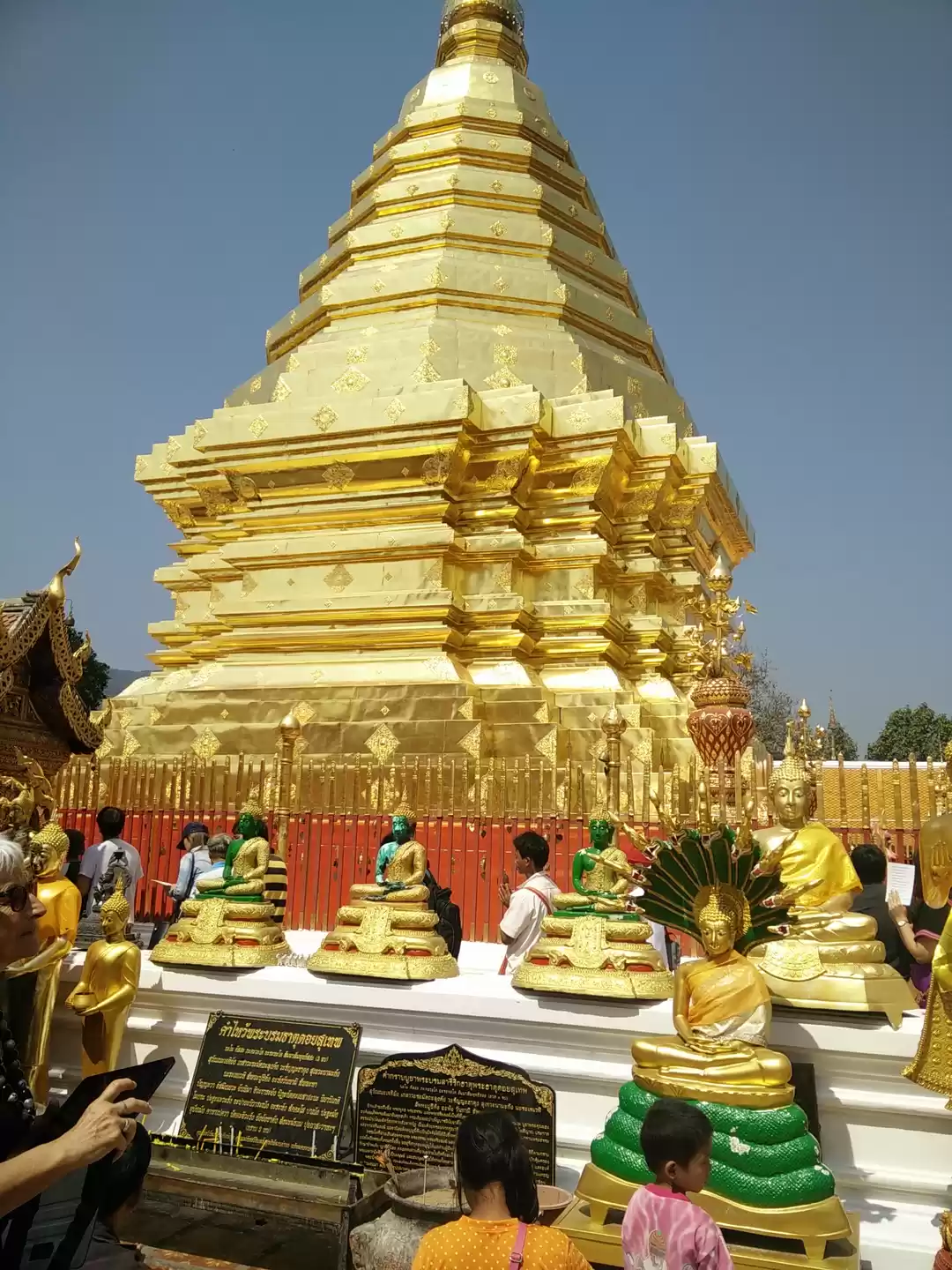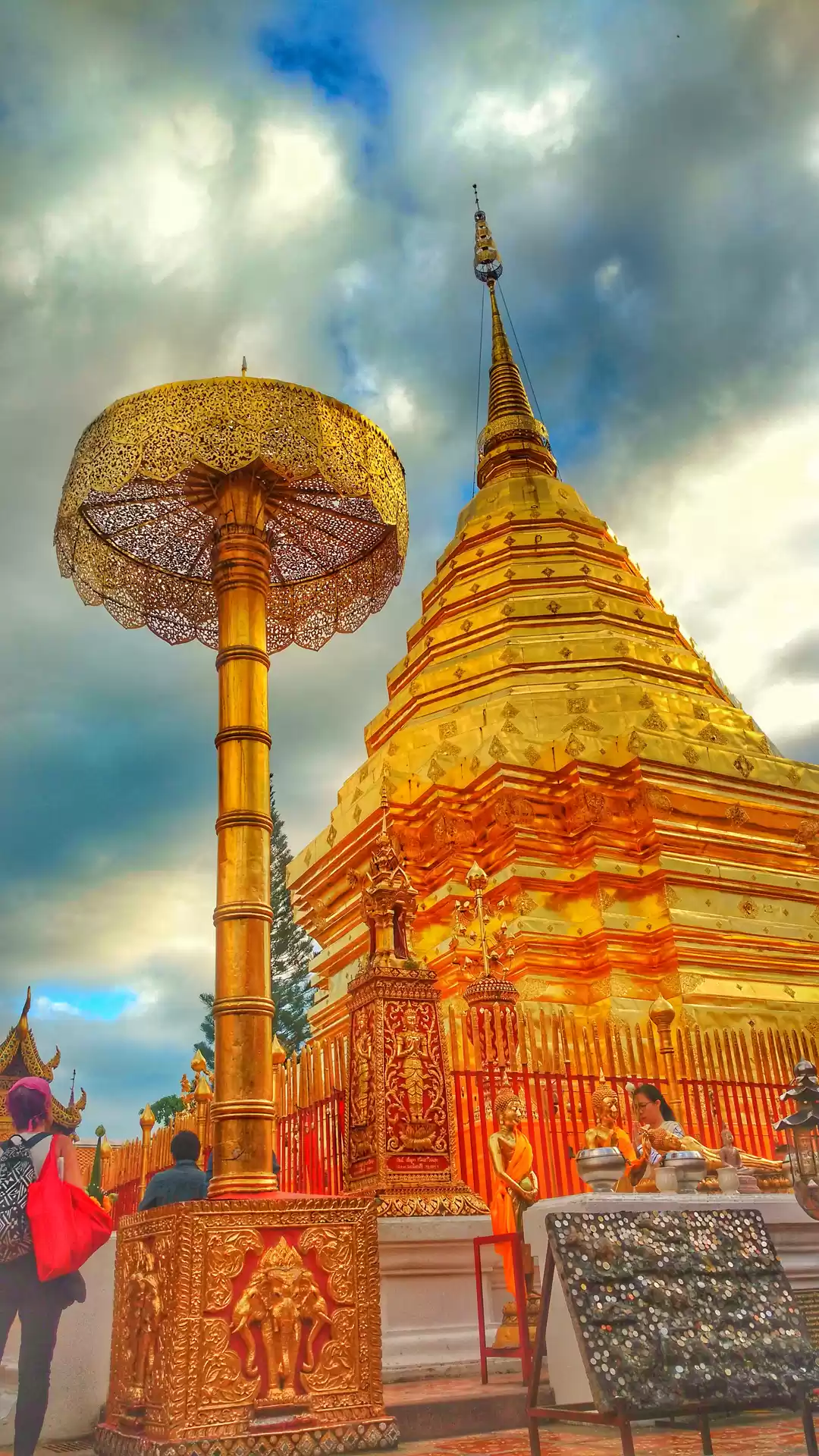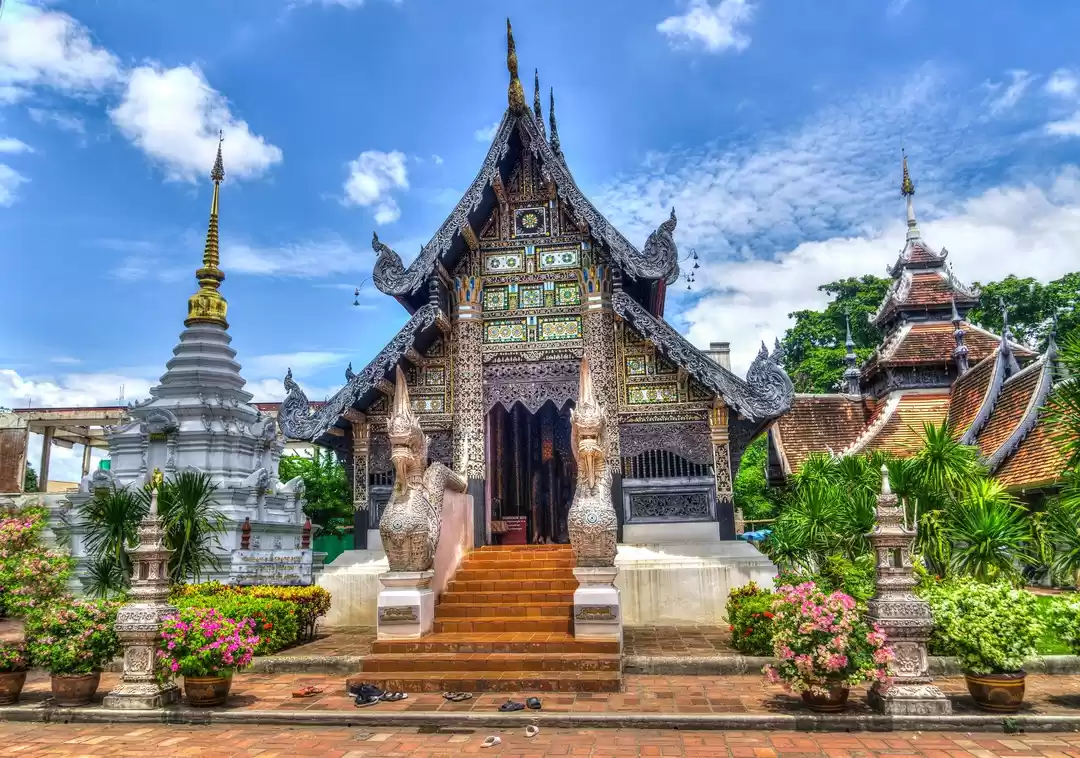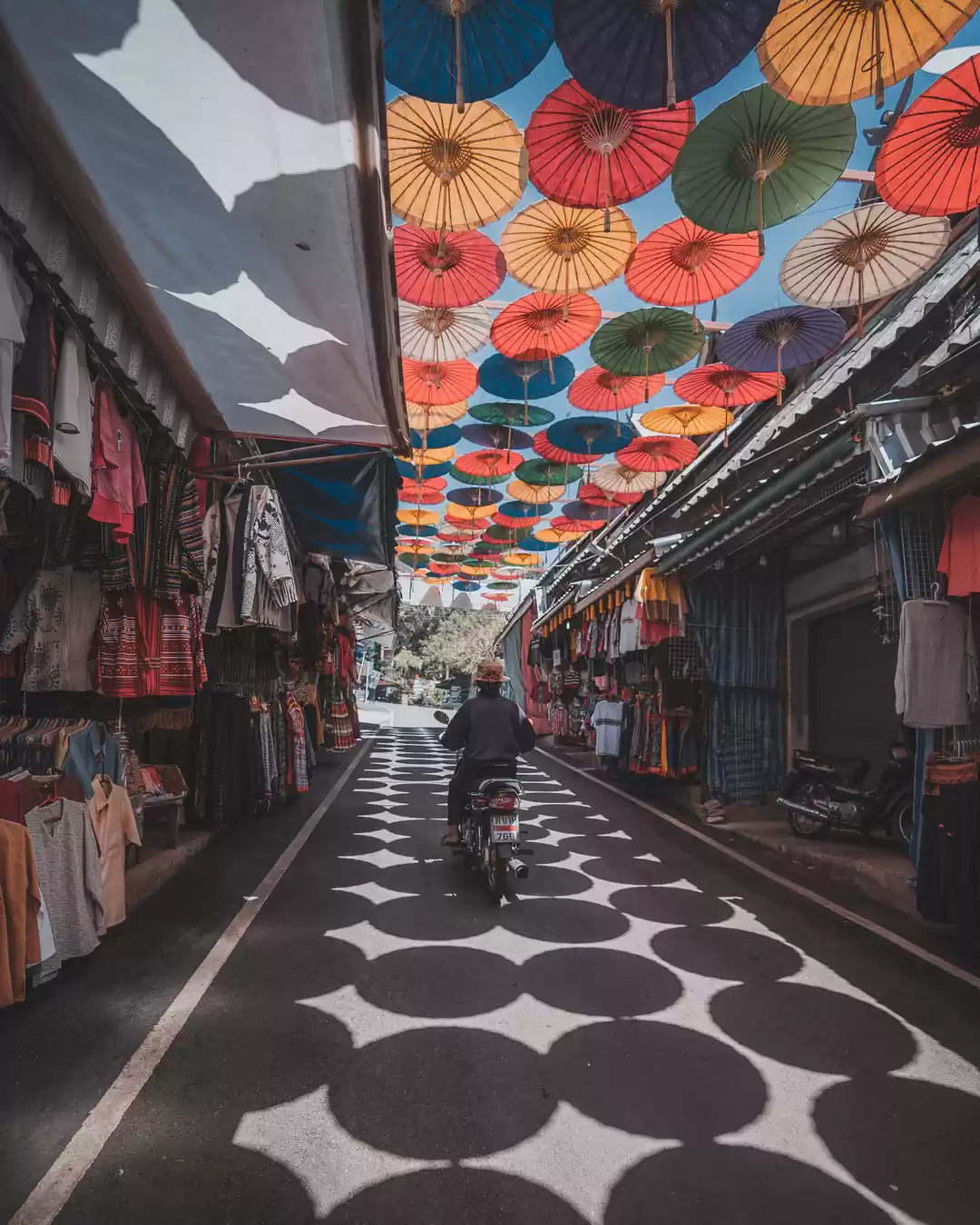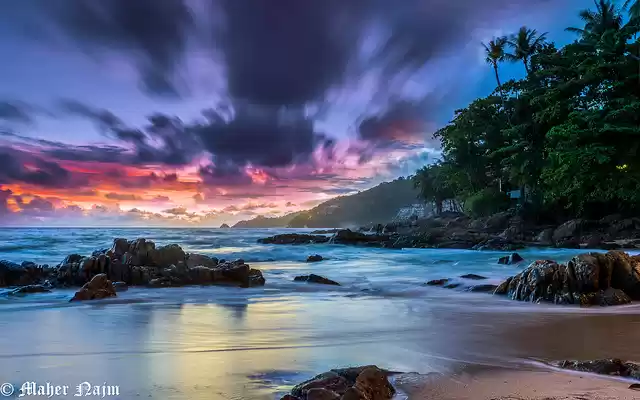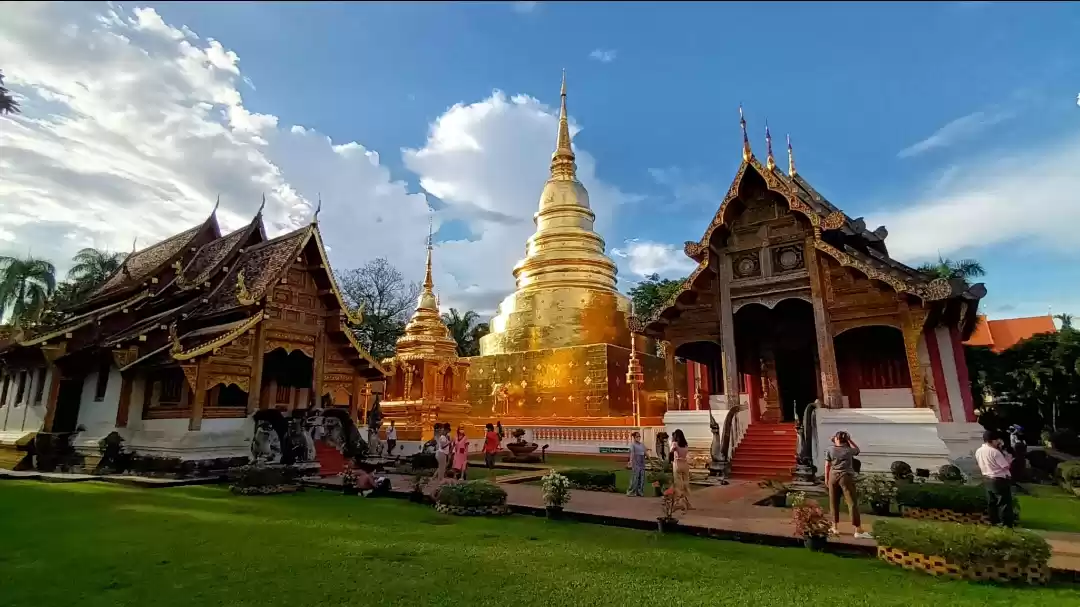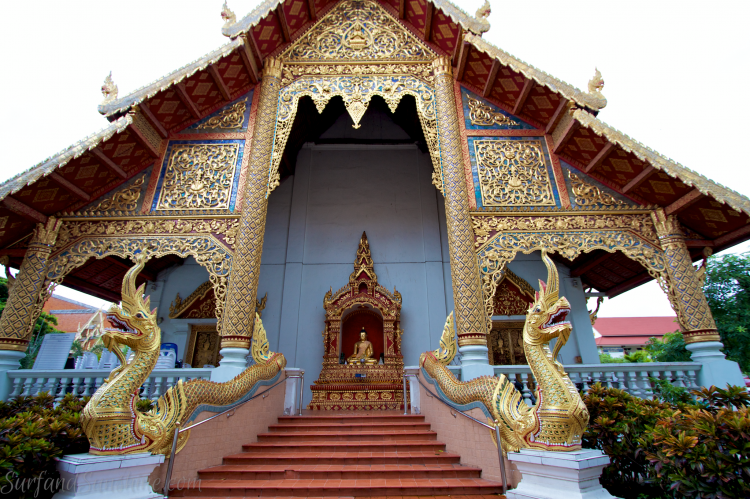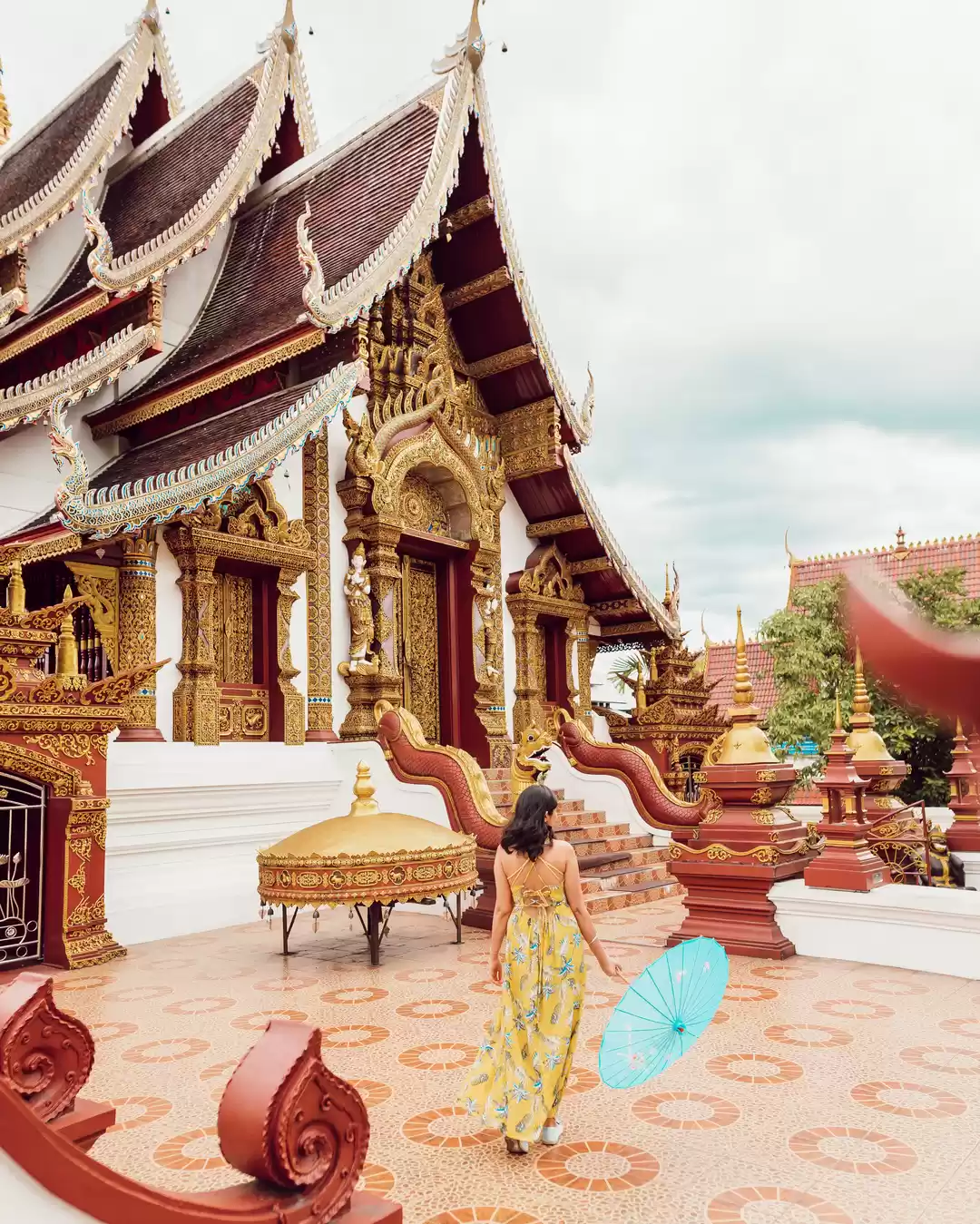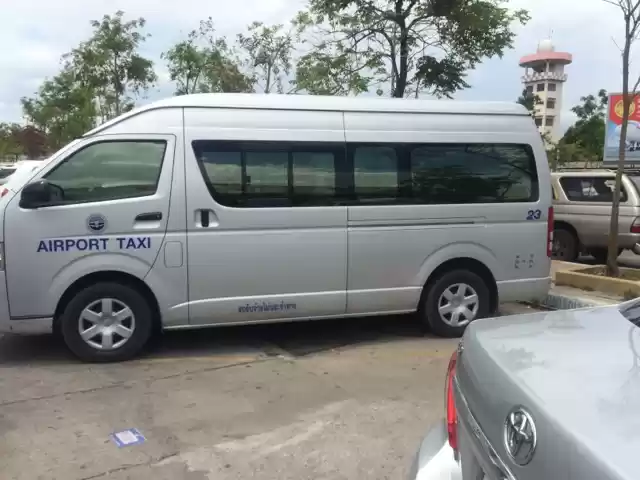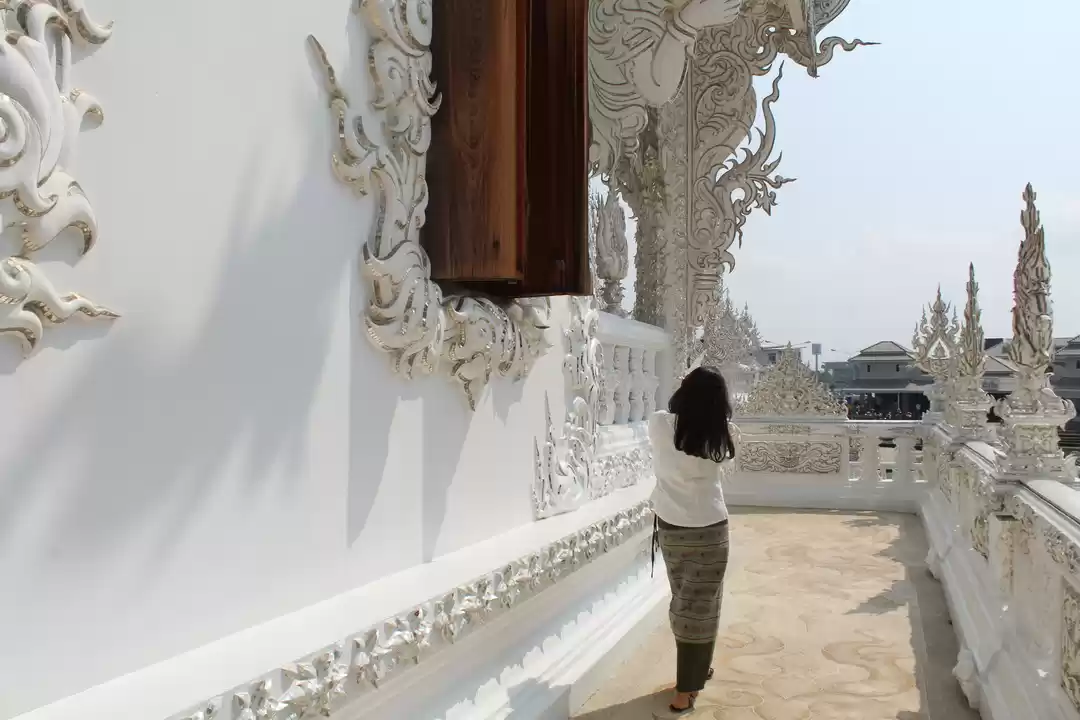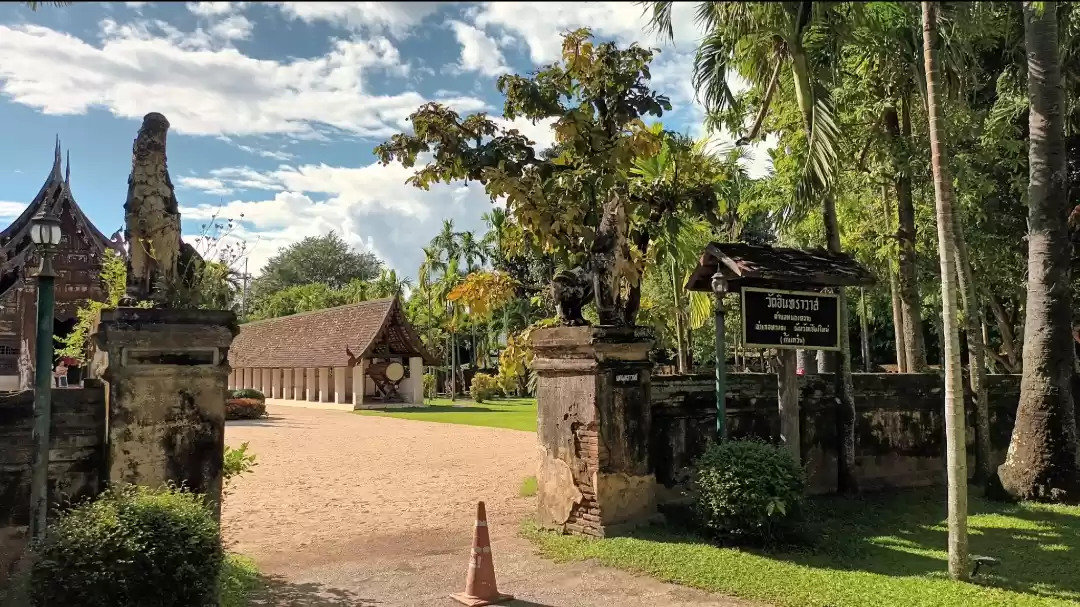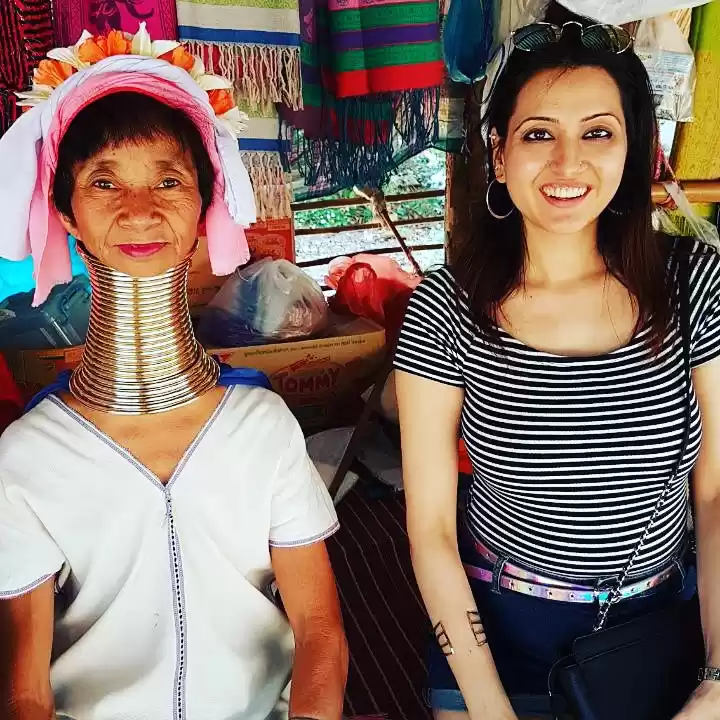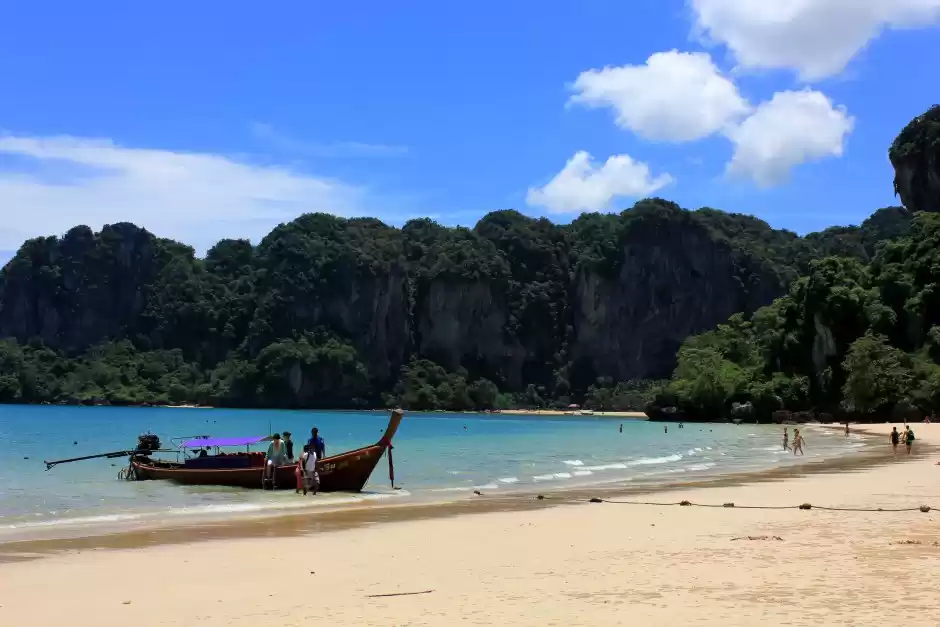Are you looking for a cultural and spiritual experience in Chiang Mai? Do you want to explore one of the most important and impressive temples in the city? If so, you should not miss Wat Phra Singh, a stunning temple that dates back to the 14th century and houses a revered Buddha image.
In this article, we will tell you everything you need to know about Wat Phra Singh, from its history and meaning to its architecture and attractions. We will also give you some practical tips and advice on how to visit the temple and make the most of your trip.
Read on to discover why Wat Phra Singh is a must-see attraction for anyone visiting Chiang Mai.
History and Meaning of Wat Phra Singh
Wat Phra Singh, which translates to “Temple of the Lion Buddha”, is one of the oldest and most significant temples in Chiang Mai. It was founded in 1345 by King Pha Yu, the fifth king of the Lanna Kingdom, who enshrined the ashes of his father, King Kham Fu, in the main chedi (stupa) of the temple. The temple was originally named Wat Li Chiang Phra, but it was renamed Wat Phra Singh in 1367, when a Buddha image from Sri Lanka, known as Phra Singh (Lion Buddha), was brought to the temple. The Phra Singh image is considered one of the most sacred and beautiful Buddha images in Thailand, and it is believed to have miraculous powers.

Wat Phra Singh has undergone several restoration and expansion projects over the centuries, especially in the 19th and 20th centuries, when the temple became the center of Buddhist education and culture in northern Thailand. The temple also played a key role in the Songkran festival, the Thai New Year celebration, which takes place in mid-April. During the festival, the Phra Singh image is carried in a procession around the city, and people sprinkle water on the image and on each other as a sign of respect and blessing.
Wat Phra Singh is one of the largest and most visited temples in Chiang Mai, covering an area of about 12 acres. It attracts more than a million visitors every year, who come to admire its beauty and pay homage to its Buddha image. The temple is also a living and active place of worship, where monks and novices live, study, and practice Buddhism.
Architecture and Attractions of Wat Phra Singh
Wat Phra Singh is a masterpiece of Lanna and Thai architecture, featuring a harmonious blend of styles and elements. The temple complex consists of several structures and features, each with its own charm and significance. Here are some of the main attractions of Wat Phra Singh that you should not miss:

The main chedi:
The main chedi is the oldest and most prominent structure of the temple, located in the center of the complex. It is a large bell-shaped stupa, built in the Lanna style, with a golden spire and an octagonal base. The chedi contains the ashes of King Kham Fu, the founder of the temple, and it is surrounded by four smaller stupas and four Buddha statues. The chedi is also decorated with elephant sculptures, mythical creatures, and colorful tiles.
The Viharn Lai Kham:
The Viharn Lai Kham is the main assembly hall of the temple, located to the south of the main chedi. It is a beautiful wooden building, built in the Lanna style, with a multi-tiered roof and a gilded facade. The hall houses the Phra Singh image, which is placed on a pedestal behind an ornate altar. The hall is also adorned with exquisite murals, depicting scenes from the life of the Buddha, the history of the temple, and the customs and traditions of the Lanna people.
The Phra Singh Buddha:
The Phra Singh Buddha is the most revered and celebrated attraction of the temple, and the reason for its name. It is a Buddha image in the maravijaya (victory over Mara) posture, made of bronze and covered with gold leaf. The image is about 1.5 meters tall, and it has a serene and graceful expression. The image is believed to have originated in Sri Lanka, and to have arrived in Chiang Mai in the 14th century. The image is also known as Phra Chao Thong Tip, which means “The Golden-Tipped Lord Buddha”, because of the golden tip of its ushnisha (cranial protuberance).
The Ho Trai:
The Ho Trai is the library of the temple, located to the north of the main chedi. It is a stunning wooden building, built in the Thai style, with a multi-tiered roof and a gilded facade. The library is raised on a stone platform, and it is surrounded by a moat and a wall. The library contains a collection of ancient Buddhist scriptures, written on palm leaves and stored in lacquered and gilded cabinets. The library is also decorated with carvings, paintings, and mirrors.
The murals:
The murals are one of the most impressive and distinctive features of Wat Phra Singh, as they showcase the artistic and cultural heritage of the Lanna Kingdom. The murals are found in various buildings of the temple, such as the Viharn Lai Kham, the Viharn Luang, and the Ubosot (ordination hall). The murals depict scenes from the Jataka tales (stories of the Buddha’s previous lives), the Ramakien (the Thai version of the Ramayana epic), the history of Chiang Mai, and the daily life of the Lanna people. The murals are painted in vivid colors, with intricate details and realistic expressions.
How to Visit Wat Phra Singh
If you are planning to visit Wat Phra Singh, here are some practical information and tips that will help you make the most of your trip:
Location and directions:
Wat Phra Singh is located in the heart of the old city of Chiang Mai, within the walls and moat that enclose the historic center. The temple is situated at the end of Ratchadamnoen Road, the main street of the old city, and it is easily accessible by foot, bicycle, or public transportation. You can also take a songthaew (a shared taxi) or a tuk-tuk (a three-wheeled motorized vehicle) from anywhere in the city, and ask the driver to take you to Wat Phra Singh. The temple’s address is 2 Samlarn Road, Phra Singh, Muang, Chiang Mai 50200.
Opening hours and admission fees:
Wat Phra Singh is open daily from 6 a.m. to 6 p.m., and you can visit the temple at any time during these hours. However, the best time to visit the temple is in the early morning or late afternoon, when the temple is less crowded and the light is more favorable for taking photos. The admission fee for the temple is 20 baht per person, which is about 0.6 USD. You can buy the ticket at the entrance of the temple, and you will receive a sticker that you have to wear while visiting the temple.
Dress code and etiquette:
Wat Phra Singh is a sacred and active place of worship, and you have to respect the dress code and etiquette of the temple. You have to dress modestly and appropriately, covering your shoulders, chest, and knees. You have to remove your shoes and hats before entering any building of the temple, and you have to keep them in the designated areas. You have to be quiet and respectful, and avoid any loud or disruptive behavior. You have to refrain from touching or pointing at any Buddha image or monk, and you have to bow your head and lower your body when passing by them. You have to follow the instructions and signs of the temple staff and volunteers, and you have to ask for permission before taking any photos or videos.
Facilities and services:
Wat Phra Singh offers various facilities and services for visitors, such as restrooms, shops, guides, and meditation classes. You can find restrooms near the entrance of the temple, and you have to pay a small fee to use them. You can also find shops selling souvenirs, snacks, drinks, and religious items, such as amulets, candles, and incense. You can also hire a guide to show you around the temple and explain its history and significance, or you can join a free guided tour that is offered every day at 10 a.m. and 2 p.m. You can also participate in a meditation class that is offered every day at 5 p.m., and learn the basics of Buddhist meditation from a monk.
Wat Phra Singh is a remarkable temple that showcases the beauty and richness of the Lanna and Thai culture and Buddhism. It is a place where you can admire the stunning architecture and art, learn about the history and meaning of the temple, and experience the spiritual and festive atmosphere of the temple. Wat Phra Singh is a must-see attraction for anyone visiting Chiang Mai, and it will leave you with a lasting impression and a deeper appreciation of the city and its people.
If you are interested in visiting Wat Phra Singh, or if you have any questions or comments, please feel free to contact us or leave a comment below.
We would love to hear from you and help you plan your trip. Thank you for reading, and we hope you enjoy your visit to Wat Phra Singh.

